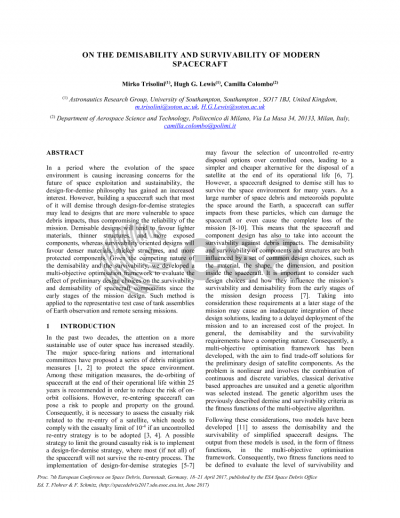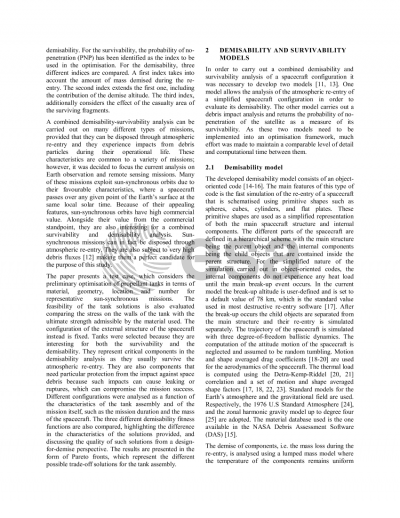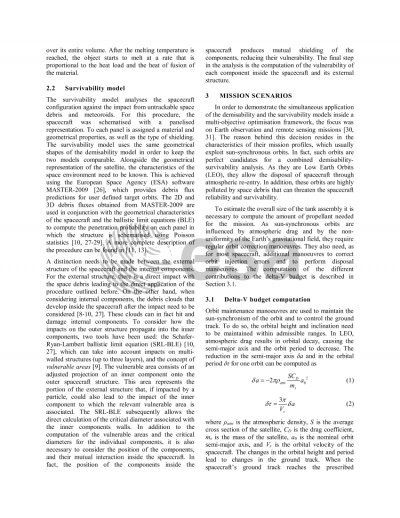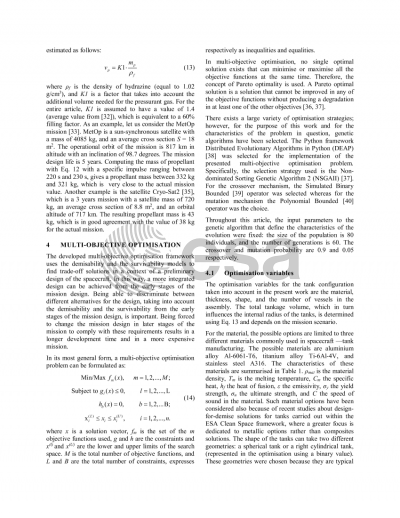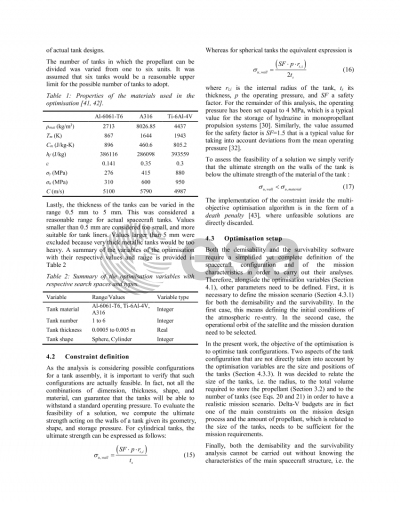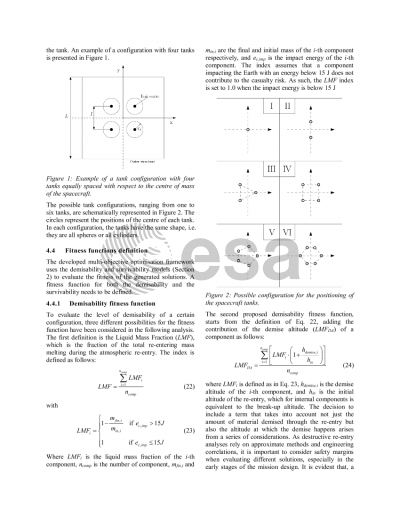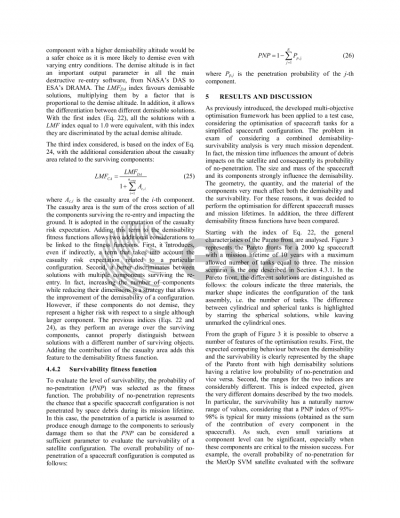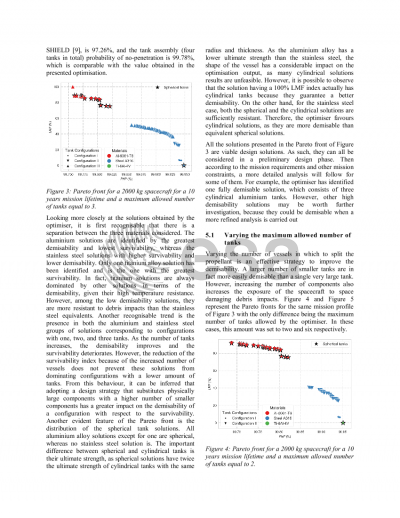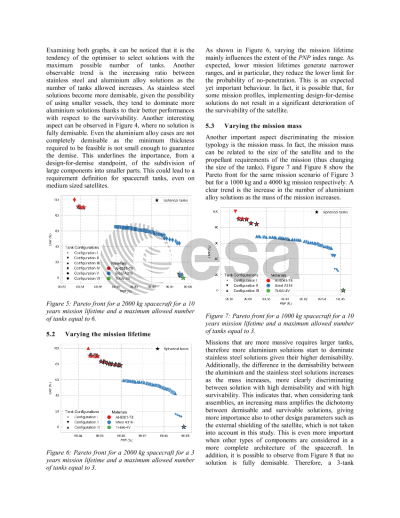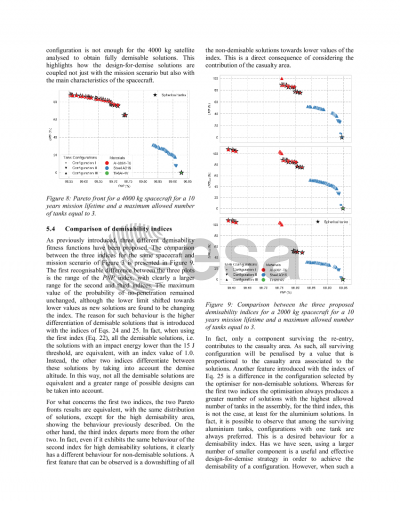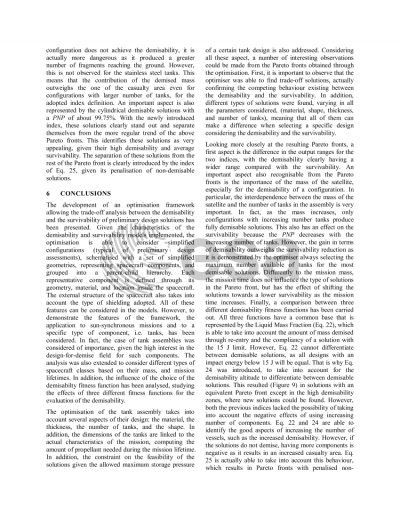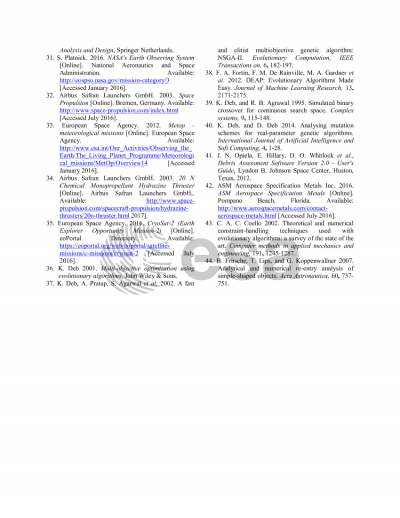Document details

Abstract
In a period where the evolution of the space environment is causing increasing concerns for the future of space exploitation and sustainability, the design-for-demise philosophy has gained an increased interest. However, satellites designed to demise still have to survive the space environment polluted by space debris for many years.
Building a spacecraft such that most of it will demise during the re-entry through design-for-demise strategies may lead to designs that are more vulnerable to space debris impacts, thus compromising the reliability of the mission. In fact, the demisability and the survivability of a satellite can both be influenced by a set of common design choices like the material selection, the geometry definition, and the position of the components inside the spacecraft. Demisable design will tend to favour lighter materials, thinner structures and more exposed components, whereas survivability oriented design will favour denser materials, thicker structures, and more protected components.
Given the competing nature of the demisability and the survivability requirements, we have developed a method to evaluate the effect of preliminary design choices on the survivability and demisability of a spacecraft configuration since the early stages of the mission design. For such a scope, a multi-objective optimisation framework was developed to find trade-off solutions that consider both demisability and survivability design drivers. As the problem is nonlinear and involves the combination of continuous and discrete variables, classical derivative based approaches are unsuited and a genetic algorithm was selected. In addition, two models were developed to analyse the demisability and the survivability of satellites. The demisability model schematises the spacecraft structure and the internal components with elementary shapes. The re-entry of internal components is analysed after the main structure break up. The survivability model computes the vulnerability on a simplified model of the spacecraft as a function of the material, the shielding type, and the geometry using the concept of vulnerable zones. Both external panels and internal components are checked against damage from debris. The output from the models is used to compute the two objective functions to be concurrently maximised through multi-objective optimisation.
The paper presents the development of two criteria to evaluate the level of demisability and of survivability of a simplified spacecraft configuration. These criteria are used to study the effect that design choices made since the early stages of the mission development can have on the survivability and the demisability. Internal components (e.g. tanks and battery assemblies) are analysed as a function of common design parameters. Finally, the optimisation of a simplified spacecraft configuration is performed varying the characteristics of both internal components and external panels at the same time, for a representative sun-synchronous missions. The paper focuses on sun-synchronous orbits as they are highly exploited orbits with very high commercial value. They are also good candidates for a combined survivability and demisability analysis as they can be disposed through atmospheric re-entry, and they are subject to very high debris fluxes. The results present the possible trade-off solutions, constituting the Pareto front obtained from the multi-objective optimisation.
Preview
